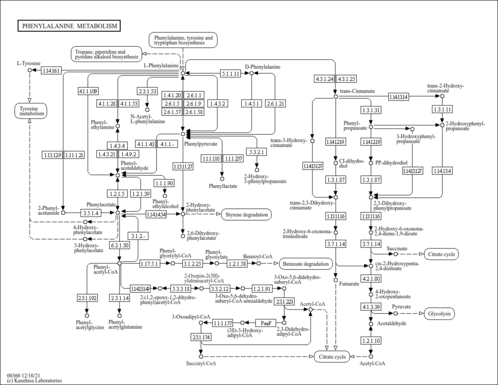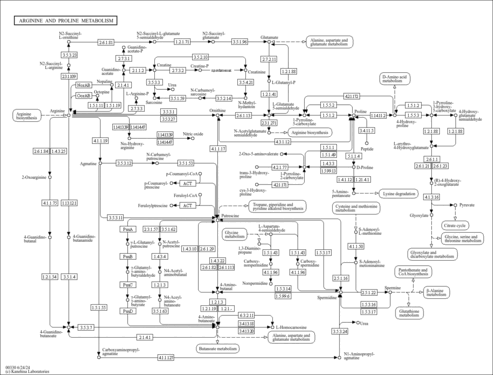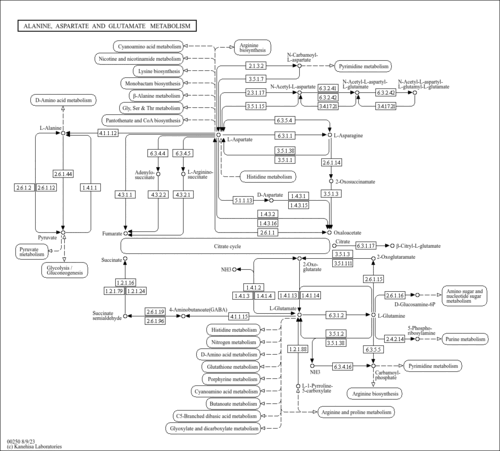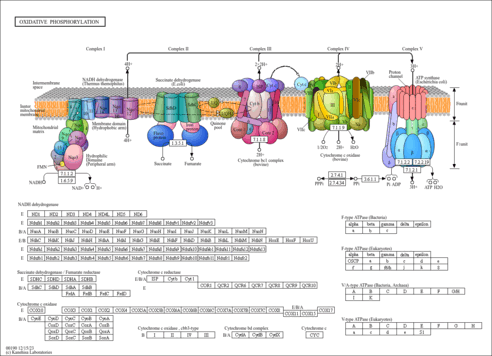| Record Information |
|---|
| Version | 1.0 |
|---|
| Created at | 2020-04-17 18:38:59 UTC |
|---|
| Updated at | 2022-12-13 23:36:28 UTC |
|---|
| CannabisDB ID | CDB004809 |
|---|
| Secondary Accession Numbers | Not Available |
|---|
| Cannabis Compound Identification |
|---|
| Common Name | Fumaric acid |
|---|
| Description | Fumaric acid, also known as E297 or fumarsaeure, belongs to the class of organic compounds known as dicarboxylic acids and derivatives. These are organic compounds containing exactly two carboxylic acid groups. Fumaric acid is a weakly acidic compound (based on its pKa). Fumaric acid exists in all living species, ranging from bacteria to humans. Within humans, fumaric acid participates in a number of enzymatic reactions. In particular, fumaric acid can be biosynthesized from L-malic acid; which is catalyzed by the enzyme fumarate hydratase, mitochondrial. In addition, fumaric acid can be biosynthesized from succinic acid through the action of the enzyme mutant succinate dehydrogenase. A butenedioic acid in which the C=C double bond has E geometry. In humans, fumaric acid is involved in the metabolic disorder called the glutaminolysis and cancer pathway. Fumaric acid is an odorless and sour tasting compound. Outside of the human body, Fumaric acid is found, on average, in the highest concentration within a few different foods, such as sweet cherries, star fruits, and milk (cow) and in a lower concentration in grape wines. Fumaric acid has also been detected, but not quantified in, several different foods, such as cow milks, apples, fishes, garden rhubarbs, and common sages. This could make fumaric acid a potential biomarker for the consumption of these foods. Fumaric acid is a potentially toxic compound. Fumaric acid, with regard to humans, has been found to be associated with several diseases such as rheumatoid arthritis, eosinophilic esophagitis, and lung cancer; fumaric acid has also been linked to several inborn metabolic disorders including 2-ketoglutarate dehydrogenase complex deficiency and fumarase deficiency. Fumaric acid is expected to be in Cannabis as all living plants are known to produce and metabolize it. |
|---|
| Structure | |
|---|
| Synonyms | | Value | Source |
|---|
| (2E)-2-Butenedioic acid | ChEBI | | (e)-2-Butenedioic acid | ChEBI | | e297 | ChEBI | | Fumarsaeure | ChEBI | | trans-1,2-Ethylenedicarboxylic acid | ChEBI | | trans-But-2-enedioic acid | ChEBI | | trans-Butenedioic acid | ChEBI | | (2E)-2-Butenedioate | Generator | | (e)-2-Butenedioate | Generator | | trans-1,2-Ethylenedicarboxylate | Generator | | trans-But-2-enedioate | Generator | | trans-Butenedioate | Generator | | Fumarate | Generator | | (2E)-But-2-enedioate | HMDB | | (2E)-But-2-enedioic acid | HMDB | | 2-(e)-Butenedioate | HMDB | | 2-(e)-Butenedioic acid | HMDB | | Allomaleate | HMDB | | Allomaleic acid | HMDB | | Boletate | HMDB | | Boletic acid | HMDB | | FC 33 | HMDB | | Lichenate | HMDB | | Lichenic acid | HMDB | | trans-2-Butenedioate | HMDB | | trans-2-Butenedioic acid | HMDB | | Furamag | HMDB | | Mafusol | HMDB | | Fumaric acid | HMDB |
|
|---|
| Chemical Formula | C4H4O4 |
|---|
| Average Molecular Weight | 116.07 |
|---|
| Monoisotopic Molecular Weight | 116.011 |
|---|
| IUPAC Name | (2E)-but-2-enedioic acid |
|---|
| Traditional Name | fumaric acid |
|---|
| CAS Registry Number | 110-17-8 |
|---|
| SMILES | OC(=O)\C=C\C(O)=O |
|---|
| InChI Identifier | InChI=1S/C4H4O4/c5-3(6)1-2-4(7)8/h1-2H,(H,5,6)(H,7,8)/b2-1+ |
|---|
| InChI Key | VZCYOOQTPOCHFL-OWOJBTEDSA-N |
|---|
| Chemical Taxonomy |
|---|
| Description | Belongs to the class of organic compounds known as dicarboxylic acids and derivatives. These are organic compounds containing exactly two carboxylic acid groups. |
|---|
| Kingdom | Organic compounds |
|---|
| Super Class | Organic acids and derivatives |
|---|
| Class | Carboxylic acids and derivatives |
|---|
| Sub Class | Dicarboxylic acids and derivatives |
|---|
| Direct Parent | Dicarboxylic acids and derivatives |
|---|
| Alternative Parents | |
|---|
| Substituents | - Fatty acyl
- Fatty acid
- Unsaturated fatty acid
- Dicarboxylic acid or derivatives
- Carboxylic acid
- Organic oxygen compound
- Organic oxide
- Hydrocarbon derivative
- Organooxygen compound
- Carbonyl group
- Aliphatic acyclic compound
|
|---|
| Molecular Framework | Aliphatic acyclic compounds |
|---|
| External Descriptors | |
|---|
| Ontology |
|---|
|
| Physiological effect | Health effect: |
|---|
| Disposition | Route of exposure: Source: Biological location: |
|---|
| Role | Biological role: Environmental role: Industrial application: |
|---|
| Physical Properties |
|---|
| State | Solid |
|---|
| Experimental Properties | | Property | Value | Reference |
|---|
| Melting Point | 549 °C | Not Available | | Boiling Point | Not Available | Not Available | | Water Solubility | 7 mg/mL | Not Available | | logP | 0.46 | HANSCH,C ET AL. (1995) |
|
|---|
| Predicted Properties | [] |
|---|
| Spectra |
|---|
| EI-MS/GC-MS | | Type | Description | Splash Key | View |
|---|
| EI-MS | Mass Spectrum (Electron Ionization) | splash10-0092-9000000000-003dd2d9303272b2ebea | 2014-09-20 | View Spectrum | | GC-MS | Fumaric acid, 2 TMS, GC-MS Spectrum | splash10-0002-2940000000-e988056514d4ce4acc27 | Spectrum | | GC-MS | Fumaric acid, 2 TMS, GC-MS Spectrum | splash10-0002-2960000000-a5ebaf2bbade922838ec | Spectrum | | GC-MS | Fumaric acid, 2 TMS, GC-MS Spectrum | splash10-0002-2950000000-32afa4d45e0e72b174b4 | Spectrum | | GC-MS | Fumaric acid, non-derivatized, GC-MS Spectrum | splash10-0002-0950000000-fe0f05c02c783d0b6f6b | Spectrum | | GC-MS | Fumaric acid, 2 TMS, GC-MS Spectrum | splash10-006t-9530000000-0fc03f31f09dc8dbf4c6 | Spectrum | | GC-MS | Fumaric acid, 2 TMS, GC-MS Spectrum | splash10-0002-3690000000-75089756992cdbe841e3 | Spectrum | | GC-MS | Fumaric acid, non-derivatized, GC-MS Spectrum | splash10-0002-9100000000-2cf649749b42cc0c610c | Spectrum | | GC-MS | Fumaric acid, non-derivatized, GC-MS Spectrum | splash10-0007-0890000000-b1c35cd55deb81254f66 | Spectrum | | GC-MS | Fumaric acid, non-derivatized, GC-MS Spectrum | splash10-0002-2940000000-e988056514d4ce4acc27 | Spectrum | | GC-MS | Fumaric acid, non-derivatized, GC-MS Spectrum | splash10-0002-2960000000-a5ebaf2bbade922838ec | Spectrum | | GC-MS | Fumaric acid, non-derivatized, GC-MS Spectrum | splash10-0002-2950000000-32afa4d45e0e72b174b4 | Spectrum | | GC-MS | Fumaric acid, non-derivatized, GC-MS Spectrum | splash10-0002-0950000000-fe0f05c02c783d0b6f6b | Spectrum | | GC-MS | Fumaric acid, non-derivatized, GC-MS Spectrum | splash10-006t-9530000000-0fc03f31f09dc8dbf4c6 | Spectrum | | GC-MS | Fumaric acid, non-derivatized, GC-MS Spectrum | splash10-0002-3690000000-75089756992cdbe841e3 | Spectrum | | GC-MS | Fumaric acid, non-derivatized, GC-MS Spectrum | splash10-0002-0940000000-177fdb9168659029ffaa | Spectrum | | Predicted GC-MS | Fumaric acid, non-derivatized, Predicted GC-MS Spectrum - 70eV, Positive | splash10-01ba-9200000000-52f88e04bac0ff8cdf17 | Spectrum | | Predicted GC-MS | Fumaric acid, 2 TMS, Predicted GC-MS Spectrum - 70eV, Positive | splash10-00di-8920000000-06da44f348d0fe0358b3 | Spectrum | | Predicted GC-MS | Fumaric acid, non-derivatized, Predicted GC-MS Spectrum - 70eV, Positive | Not Available | Spectrum | | Predicted GC-MS | Fumaric acid, non-derivatized, Predicted GC-MS Spectrum - 70eV, Positive | Not Available | Spectrum | | Predicted GC-MS | Fumaric acid, TMS_1_1, Predicted GC-MS Spectrum - 70eV, Positive | Not Available | Spectrum | | Predicted GC-MS | Fumaric acid, TBDMS_1_1, Predicted GC-MS Spectrum - 70eV, Positive | Not Available | Spectrum | | Predicted GC-MS | Fumaric acid, TBDMS_2_1, Predicted GC-MS Spectrum - 70eV, Positive | Not Available | Spectrum |
|
|---|
| MS/MS | | Type | Description | Splash Key | View |
|---|
| MS/MS | LC-MS/MS Spectrum - Quattro_QQQ 10V, Negative (Annotated) | splash10-00di-9100000000-57f13cd433a6fe4bf0b3 | 2012-07-24 | View Spectrum | | MS/MS | LC-MS/MS Spectrum - Quattro_QQQ 25V, Negative (Annotated) | splash10-0229-9600000000-cd9e2979d0bb1e2a62f2 | 2012-07-24 | View Spectrum | | MS/MS | LC-MS/MS Spectrum - Quattro_QQQ 40V, Negative (Annotated) | splash10-03k9-8900000000-dc50dbf8a50872383d54 | 2012-07-24 | View Spectrum | | MS/MS | LC-MS/MS Spectrum - EI-B (HITACHI RMU-6L) , Positive | splash10-0002-9100000000-b47e534bc82a6ed36e7c | 2012-08-31 | View Spectrum | | MS/MS | LC-MS/MS Spectrum - 10V, Negative | splash10-00di-9000000000-04b277f233e1bd56c9af | 2021-09-20 | View Spectrum | | MS/MS | LC-MS/MS Spectrum - 10V, Negative | splash10-03di-4900000000-99764eff7d7cb7bfaee3 | 2021-09-20 | View Spectrum | | MS/MS | LC-MS/MS Spectrum - 35V, Negative | splash10-00di-9000000000-453b921a0aaf64cfd558 | 2021-09-20 | View Spectrum | | MS/MS | LC-MS/MS Spectrum - 40V, Positive | splash10-0f6x-9000000000-cd7e7026d13bb5fe844b | 2021-09-20 | View Spectrum | | MS/MS | LC-MS/MS Spectrum - 10V, Positive | splash10-00dj-9000000000-383c22a29e2769626c47 | 2021-09-20 | View Spectrum | | MS/MS | LC-MS/MS Spectrum - 20V, Positive | splash10-0ir3-9000000000-3013847e2e0f9bf18d29 | 2021-09-20 | View Spectrum | | MS/MS | LC-MS/MS Spectrum - 30V, Negative | splash10-00di-9000000000-9cc4f29b523ed34dc0b6 | 2021-09-20 | View Spectrum | | MS/MS | LC-MS/MS Spectrum - 15V, Negative | splash10-00di-9000000000-d9885a6093f38dd8b9fa | 2021-09-20 | View Spectrum | | MS/MS | LC-MS/MS Spectrum - 45V, Negative | splash10-00di-9000000000-46fdee94b5a787f1b81f | 2021-09-20 | View Spectrum | | MS/MS | LC-MS/MS Spectrum - 35V, Negative | splash10-03k9-8900000000-3ff0fb725ec9dffc3688 | 2021-09-20 | View Spectrum | | MS/MS | LC-MS/MS Spectrum - 20V, Negative | splash10-014m-9000000000-394fd8f1b59c7befec9d | 2021-09-20 | View Spectrum | | Predicted MS/MS | Predicted LC-MS/MS Spectrum - 10V, Positive | splash10-014j-9800000000-dbf34563376daeb2901f | 2016-09-12 | View Spectrum | | Predicted MS/MS | Predicted LC-MS/MS Spectrum - 20V, Positive | splash10-00xs-9200000000-113bf08cdc77707ed3ad | 2016-09-12 | View Spectrum | | Predicted MS/MS | Predicted LC-MS/MS Spectrum - 40V, Positive | splash10-00fr-9000000000-f32d7ec65e8649bc2b0a | 2016-09-12 | View Spectrum | | Predicted MS/MS | Predicted LC-MS/MS Spectrum - 10V, Negative | splash10-014i-2900000000-408d53a9fff7acc8ca23 | 2016-09-12 | View Spectrum | | Predicted MS/MS | Predicted LC-MS/MS Spectrum - 20V, Negative | splash10-014i-6900000000-f149e9e5a34e27dd4d4e | 2016-09-12 | View Spectrum | | Predicted MS/MS | Predicted LC-MS/MS Spectrum - 40V, Negative | splash10-0fxt-9000000000-cae5f71dc27daaf17d9e | 2016-09-12 | View Spectrum | | Predicted MS/MS | Predicted LC-MS/MS Spectrum - 10V, Negative | splash10-00di-9000000000-3d34cd791255c022876a | 2021-09-21 | View Spectrum | | Predicted MS/MS | Predicted LC-MS/MS Spectrum - 20V, Negative | splash10-00di-9000000000-55a5c43ec34fdd2cb0a4 | 2021-09-21 | View Spectrum | | Predicted MS/MS | Predicted LC-MS/MS Spectrum - 40V, Negative | splash10-0uk9-9000000000-7c9639a65d534cd8ff97 | 2021-09-21 | View Spectrum | | Predicted MS/MS | Predicted LC-MS/MS Spectrum - 10V, Positive | splash10-000t-9000000000-c5eb63dc643f72e91ede | 2021-09-25 | View Spectrum |
|
|---|
| NMR | | Type | Description | | View |
|---|
| 1D NMR | 1H NMR Spectrum (1D, 500 MHz, H2O, experimental) | | Spectrum | | 1D NMR | 13C NMR Spectrum (1D, 125 MHz, H2O, experimental) | | Spectrum | | 1D NMR | 1H NMR Spectrum (1D, 400 MHz, DMSO-d6, experimental) | | Spectrum | | 1D NMR | 13C NMR Spectrum (1D, 22.53 MHz, DMSO-d6, experimental) | | Spectrum | | 1D NMR | 1H NMR Spectrum (1D, D2O, experimental) | | Spectrum | | 1D NMR | 13C NMR Spectrum (1D, D2O, experimental) | | Spectrum | | 1D NMR | 1H NMR Spectrum (1D, 100 MHz, D2O, predicted) | | Spectrum | | 1D NMR | 13C NMR Spectrum (1D, 100 MHz, D2O, predicted) | | Spectrum | | 1D NMR | 1H NMR Spectrum (1D, 1000 MHz, D2O, predicted) | | Spectrum | | 1D NMR | 13C NMR Spectrum (1D, 1000 MHz, D2O, predicted) | | Spectrum | | 1D NMR | 1H NMR Spectrum (1D, 200 MHz, D2O, predicted) | | Spectrum | | 1D NMR | 13C NMR Spectrum (1D, 200 MHz, D2O, predicted) | | Spectrum | | 1D NMR | 1H NMR Spectrum (1D, 300 MHz, D2O, predicted) | | Spectrum | | 1D NMR | 13C NMR Spectrum (1D, 300 MHz, D2O, predicted) | | Spectrum | | 1D NMR | 1H NMR Spectrum (1D, 400 MHz, D2O, predicted) | | Spectrum | | 1D NMR | 13C NMR Spectrum (1D, 400 MHz, D2O, predicted) | | Spectrum | | 1D NMR | 1H NMR Spectrum (1D, 500 MHz, D2O, predicted) | | Spectrum | | 1D NMR | 13C NMR Spectrum (1D, 500 MHz, D2O, predicted) | | Spectrum | | 1D NMR | 1H NMR Spectrum (1D, 600 MHz, D2O, predicted) | | Spectrum | | 1D NMR | 13C NMR Spectrum (1D, 600 MHz, D2O, predicted) | | Spectrum | | 1D NMR | 1H NMR Spectrum (1D, 700 MHz, D2O, predicted) | | Spectrum | | 1D NMR | 13C NMR Spectrum (1D, 700 MHz, D2O, predicted) | | Spectrum | | 1D NMR | 1H NMR Spectrum (1D, 800 MHz, D2O, predicted) | | Spectrum | | 1D NMR | 13C NMR Spectrum (1D, 800 MHz, D2O, predicted) | | Spectrum | | 1D NMR | 1H NMR Spectrum (1D, 900 MHz, D2O, predicted) | | Spectrum | | 2D NMR | [1H, 1H]-TOCSY. Unexported temporarily by An Chi on Oct 15, 2021 until json or nmrML file is generated. 2D NMR Spectrum (experimental) | | Spectrum | | 2D NMR | [1H, 13C]-HSQC NMR Spectrum (2D, 600 MHz, H2O, experimental) | | Spectrum |
|
|---|
| Pathways |
|---|
| Pathways | | Name | SMPDB/Pathwhiz | KEGG | | Phenylalanine and Tyrosine Metabolism |    |  | | Arginine and Proline Metabolism |    |  | | Aspartate Metabolism |    |  | | Urea Cycle |    |  | | Mitochondrial Electron Transport Chain |    |  |
|
|---|
| Protein Targets |
|---|
| Enzymes | |
| Succinate dehydrogenase cytochrome b560 subunit, mitochondrial | SDHC | 1q23.3 | Q99643 | details | | Succinate dehydrogenase [ubiquinone] flavoprotein subunit, mitochondrial | SDHA | 5p15 | P31040 | details | | Succinate dehydrogenase [ubiquinone] cytochrome b small subunit, mitochondrial | SDHD | 11q23 | O14521 | details | | Succinate dehydrogenase [ubiquinone] iron-sulfur subunit, mitochondrial | SDHB | 1p36.1-p35 | P21912 | details | | Dopamine beta-hydroxylase | DBH | 9q34 | P09172 | details | | Adenylosuccinate lyase | ADSL | 22q13.2 | P30566 | details | | Argininosuccinate lyase | ASL | 7q11.21 | P04424 | details | | Fumarylacetoacetase | FAH | 15q25.1 | P16930 | details | | Fumarate hydratase, mitochondrial | FH | 1q42.1 | P07954 | details | | Fumarate hydratase | FH | 1q42.1 | B1ANK7 | details | | Acylpyruvase FAHD1, mitochondrial | FAHD1 | 16p13.3 | Q6P587 | details |
|
|---|
| Transporters | Not Available |
|---|
| Metal Bindings | |
| Succinate dehydrogenase cytochrome b560 subunit, mitochondrial | SDHC | 1q23.3 | Q99643 | details | | Succinate dehydrogenase [ubiquinone] cytochrome b small subunit, mitochondrial | SDHD | 11q23 | O14521 | details | | Succinate dehydrogenase [ubiquinone] iron-sulfur subunit, mitochondrial | SDHB | 1p36.1-p35 | P21912 | details | | Dopamine beta-hydroxylase | DBH | 9q34 | P09172 | details | | Fumarylacetoacetase | FAH | 15q25.1 | P16930 | details | | NAD-dependent malic enzyme, mitochondrial | ME2 | 18q21 | P23368 | details | | Acylpyruvase FAHD1, mitochondrial | FAHD1 | 16p13.3 | Q6P587 | details |
|
|---|
| Receptors | Not Available |
|---|
| Transcriptional Factors | Not Available |
|---|
| Concentrations Data |
|---|
| |
| Alien Dawg | Detected and Quantified | 0.0222 mg/g dry wt | | details | | Gabriola | Detected and Quantified | 0.0121 mg/g dry wt | | details | | Island Honey | Detected and Quantified | 0.0209 mg/g dry wt | | details | | Quadra | Detected and Quantified | 0.00696 mg/g dry wt | | details | | Sensi Star | Detected and Quantified | 0.0745 mg/g dry wt | | details | | Tangerine Dream | Detected and Quantified | 0.0142 mg/g dry wt | | details |
|
|---|
| External Links |
|---|
| HMDB ID | HMDB0000134 |
|---|
| DrugBank ID | DB01677 |
|---|
| Phenol Explorer Compound ID | Not Available |
|---|
| FoodDB ID | FDB003291 |
|---|
| KNApSAcK ID | C00001183 |
|---|
| Chemspider ID | 10197150 |
|---|
| KEGG Compound ID | C00122 |
|---|
| BioCyc ID | FUM |
|---|
| BiGG ID | 33938 |
|---|
| Wikipedia Link | Fumaric_Acid |
|---|
| METLIN ID | 3242 |
|---|
| PubChem Compound | 444972 |
|---|
| PDB ID | Not Available |
|---|
| ChEBI ID | 18012 |
|---|
| References |
|---|
| General References | Not Available |
|---|



